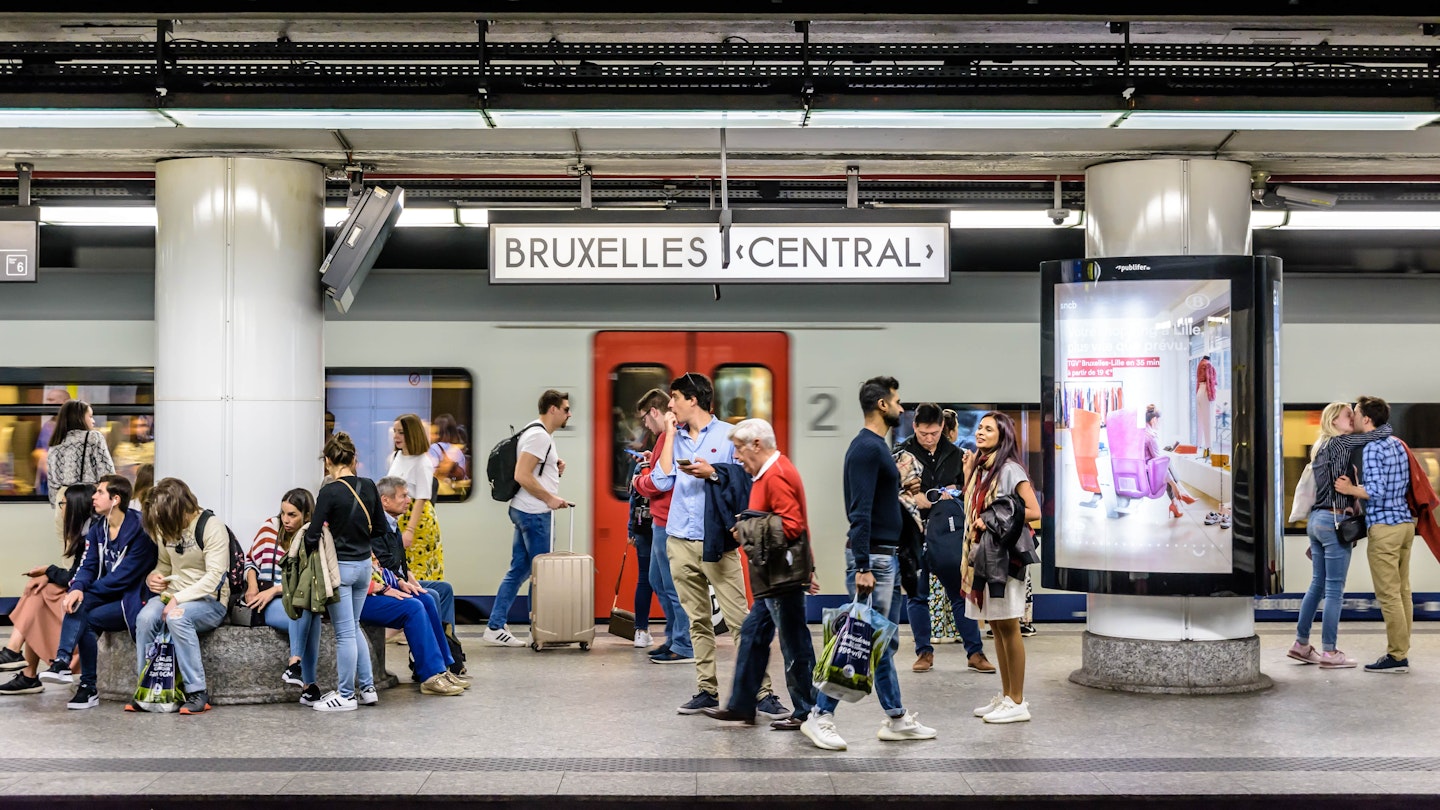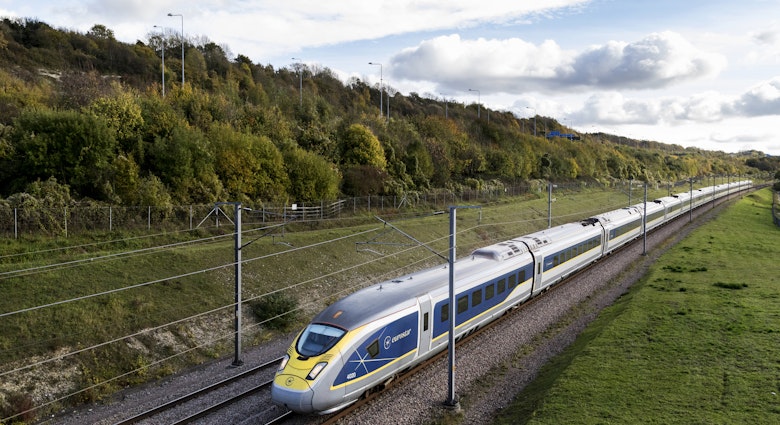
Jul 31, 2024 • 7 min read

Jun 12, 2024 • 6 min read

Getting around Belgium is easy with our guide to its trains, trams, bikes and roads © olrat / Shutterstock
Generally, when visitors plan to travel around Belgium, Brussels and Bruges are the first places that come to mind... but there's so much more to this wonderful nation that's just waiting to be discovered.
With its compact size and tight public transport networks, going from one place to the next is never an issue and is usually pretty affordable.
Whether you're a train enthusiast, a cycling aficionado or crave the comfort of a car, this guide will equip you with all the essentials for getting around Belgium.
Belgium was the second country to adopt the train after the UK, so it's no wonder its rail system is particularly extensive.
Linking major cities and medium-sized towns together, the network is managed by the national public company, . The trains are reliable (though sometimes late), frequent, efficient, and comfortable.
The train network is heavily centralized around Brussels, the country's capital. With the longest train journey from Brussels being just 2 hours and 45 minutes (to the quaint Luxembourg provincial capital of Arlon), it's an ideal base for exploring the rest of Belgium.
Traveling with a bike or a large pet? They are welcome for a small additional fee. Just make sure you spot the carriage where you can store your bike and prepare your trip with .

Buying your train ticket or pass is a breeze in Belgium. First of all, prices are fixed and no advance booking is necessary.
If you feel spontaneous and decide to travel at the last minute, just buy your ticket at the station’s counter, via automated machines, the website or its (you will need a credit card or a Paypal account). If you’re under 26 years old, a youth ticket to anywhere in Belgium is a flat fee of €7.50 one way.
If you're visiting multiple cities during your stay, SNCB/NMBS offers a transferable 10-trip pass called "Multi." The costs €102, with a discounted price of €99 if purchased on the Belgian Railways app.
For travelers under 26, the "" pass amounts to €62 and €60 on the app. It is also valid for group travel.
Last but not least, on , tickets are 50% off – you should also watch out for seasonal promotions on the Belgian Railways website.

Three cities in Belgium have a network of metro/underground trams: Brussels, Antwerp, and Charleroi. Each of them is managed by the regional public transport companies, respectively , , and .
These three companies also operate bus and tram lines in Brussels, Flanders, and Wallonia, providing a perfect complement to the train for reaching neighborhoods far away from the train station or towns without train service.
If you plan a trip to the seaside, don’t miss the . This 67km-long tram line is the longest in the world, running along the entire length of the Belgian Coast from De Panne, at the French border, to Knokke and the beautiful Zwin Bird Reserve by the Dutch border.
Buy a for €7.50 and hop on and off along the way. Recommended stops include the charming resort town of De Haan with its turn-of-the-century architecture, or the bustling city of Ostend where you can follow the footsteps of Marvin Gaye, who lived here for almost two years. You can also explore the , one of the largest in Belgium.

If trains and buses don't quite cover it and you need to travel extensively in a short time or to more remote locations, then renting a car is your best option.
All the well-known car rental companies (Hertz, Sixt, Europcar, etc.) have offices in most major Belgian cities. However, be aware that it might be an expensive option as prices have increased significantly since COVID-19 and the war in Ukraine.
To offset fuel prices and your carbon footprint, why not give car-sharing company a try? They provide electric cars that are ideal for day trips at a cost of €65 for 10 hours.
Belgium is also notorious for its traffic jams, especially around Brussels and Antwerp – it's best to avoid rush hour if possible. Finding free parking in a city can be difficult, so factor parking fees into your budget.
On the bright side, motorways in Belgium are toll-free and lit up at night. Legend has it that they're even visible from space, which French astronaut Thomas Pesquet confirmed .
Be aware of the signage, which will switch between Flemish and French depending on the region. This, combined with city names that can be completely different in each language (for instance, directions to Tournai will appear as ‘Doornik’ in Flanders), can make it easy to miss your exit. If your rental car isn't equipped with a sat nav, prepare your route in advance.
Motorbikes are also quite popular, especially in the Ardennes, where the hilly landscapes make for some epic road trips. You can usually rent one from spring to early autumn.
Whether you rent a car or a motorbike, you will need a credit card and be at least 21 years old.

In Belgium, the land of legendary cycling champion Eddy Merckx, biking is a way of life, especially in Flanders.
The north of the country is relatively flat and easy to navigate, particularly along its . This system of numbered junctions guides riders along safe and picturesque routes, allowing them to tailor-make their journey.
You can choose what to see, where to take breaks for a rest and refreshments (why not a brewery?), and where to eat. It’s a perfect way to get to know Flanders.
If you’re more comfortable with set itineraries, Visit Flanders and the provincial tourism offices selected worth trying. If you’re a history buff, another great option is exploring World War I sites on one of the .
Brussels and Wallonia also have their own cycling nodes network, although they're not as extensive as Flanders.
However, Wallonia has created , a network of car-free routes dedicated to cycling, walking, horse riding, and people with reduced mobility. Old towpaths and disused tram and train lines have been converted into smooth, easy, and family-friendly trails.
If you're not traveling a bike, renting one is not a problem. is a bike-sharing network with 124 locations across the country (mainly in Flanders), most of them at train stations.
Belgium is welcoming to travelers with reduced mobility. Train travel is particularly hassle-free, with with boarding and disembarking at over 132 stations. This free service can be booked in advance.
If you’re using public transport in Brussels, the majority of metro stations have lifts and most trams and buses are wheelchair-accessible. STIB/MIVB has a .
For those exploring Flanders, are very committed to making their region accessible to all and has even won an award for their efforts. Leuven's recognition at the EU Access City Awards 2022 also highlights Belgium's efforts towards inclusivity.
Travelers in Wallonia and Brussels can look for the logo to identify hotels, tours, events, and attractions that cater to their needs.
Make your to-do list now with our guide to the best things to do
Discover the best time to visit Belgium for you
Stretch your euros with our guide to visiting on a budget


Jul 31, 2024 • 7 min read



Jun 11, 2024 • 4 min read


May 23, 2024 • 5 min read


